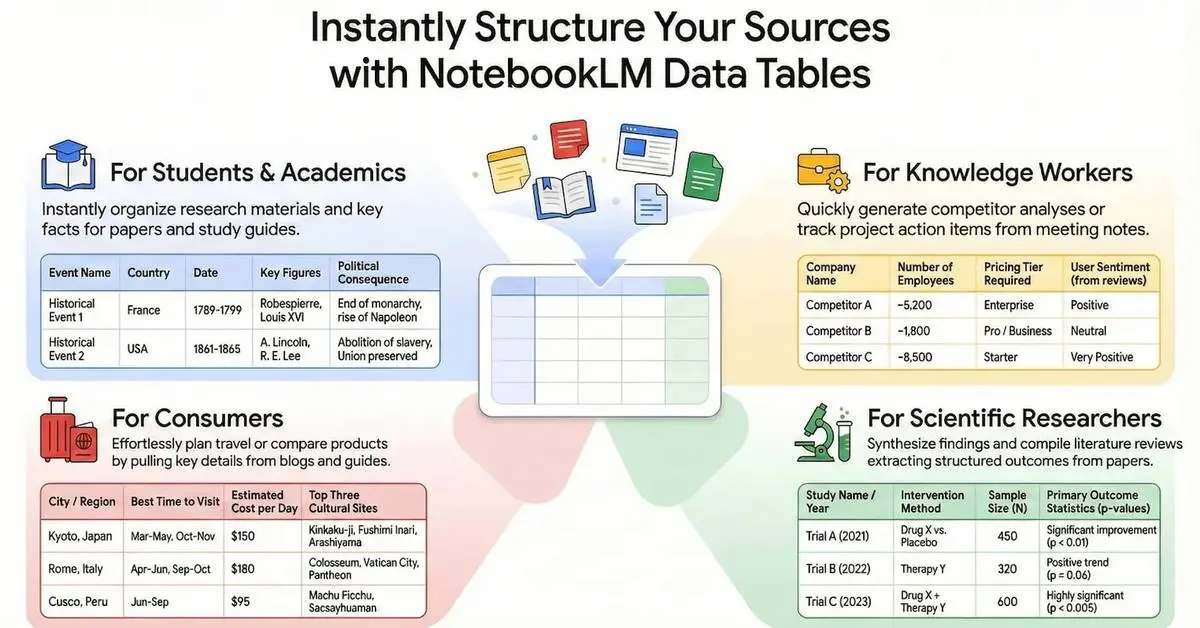AI-Enhanced 'Coffee Ring' Technology Revolutionizes At-Home Disease Testing
2 Sources
2 Sources
[1]
Coffee ring effect inspires breakthrough in rapid at-home tests for disease detection
University of California - BerkeleyJul 8 2025 Got a sore throat and the sniffles? The recent rise of rapid at-home tests has made it easier to find out if you have a serious illness like COVID-19 or just a touch of spring allergies. But while quick and convenient, these at-home tests are less sensitive than those available at the doctor's office, meaning that you may still test negative even if you are infected. A solution may come in the form of a new, low-cost biosensing technology that could make rapid at-home tests up to 100 times more sensitive to viruses like COVID-19. The diagnostic could expand rapid screening to other life-threatening conditions like prostate cancer and sepsis, as well. Created by researchers at the University of California, Berkeley, the test combines a natural evaporation process called the "coffee-ring effect" with plasmonics and AI to detect biomarkers of disease with remarkable precision in just minutes. "This simple yet effective technique can offer highly accurate results in a fraction of the time compared to traditional diagnostic methods," said Kamyar Behrouzi, who recently completed a Ph.D. in micro-electromechanical systems and nanoengineering at UC Berkeley. "Our work paves the way for more affordable, accessible diagnostics, especially in low-resource settings." The technology was developed with the support of seed funding from the CITRIS and Banatao Institute at UC Berkeley and is described in a recent study published in the journal Nature Communications. Combining coffee rings and nanoparticles Look closely at any coffee or wine stain, and you might observe that the outline of the stain is much darker than the interior. This is due to a physical phenomenon called the coffee-ring effect: As a droplet of liquid evaporates, it generates a flow that pushes suspended particles towards the edge of the droplet. If the particles are pigmented, as they are in coffee and wine, the resulting stain will be darker around the rim than in the middle. In 2020, Behrouzi was developing a biosensor for detecting COVID-19 when he noticed that droplets of his experimental solution were leaving ring-shaped stains as they dried. He realized that this coffee-ring effect could be used to easily concentrate particles of the COVID-19 virus, potentially making them easier to detect. "We figured out that we could use this coffee-ring effect to build something even better than what we initially set out to create," Behrouzi said. The rapid test technology uses tiny particles called plasmonic nanoparticles that interact with light in unique ways. To conduct the test, a user first adds a droplet of liquid containing disease-relevant proteins - such as from a cheek or nasal swab - to a membrane. As the droplet dries, it concentrates any disease biomarkers at the coffee ring. The user then adds a second droplet containing plasmonic nanoparticles that have been engineered to stick to the disease biomarkers. If the biomarkers are present, the nanoparticles will aggregate in certain patterns that change how light interacts with the membrane. This change can be detected by eye or using an AI-powered smartphone app. The technology gives results in less than 12 minutes and is 100 times more sensitive at detecting COVID-19 than equivalent tests. One of the key proteins that we are able to detect with this method is a biomarker of sepsis, a life-threatening inflammatory response to a bacterial infection that can develop rapidly in people over 50. Every hour is critical, but culturing bacteria to determine the source of the infection can take a few days. Our technique could help doctors detect sepsis in 10 to 15 minutes." Liwei Lin, Study Senior Author, Distinguished Professor of Mechanical Engineering at UC Berkeley The researchers have created a prototype of a home testing kit, similar to at-home COVID testing kits, that includes 3D-printed components to help guide the placement of the sample and plasmonic droplets. "During the COVID-19 pandemic, we relied on at-home tests to know if we were infected or not," Lin said. "I hope that our technology makes it easier and more accessible for people to regularly screen for conditions like prostate cancer without leaving the home." Additional co-authors of the study include Zahra Khodabakhshi Fard, Chun-Ming Chen, Peisheng He and Megan Teng of UC Berkeley. University of California - Berkeley Journal reference: Behrouzi, K., et al. (2025). Plasmonic coffee-ring biosensing for AI-assisted point-of-care diagnostics. Nature Communications. doi.org/10.1038/s41467-025-59868-y.
[2]
From COVID to cancer, new at-home test spots disease with startling accuracy
Got a sore throat and the sniffles? The recent rise of rapid at-home tests has made it easier to find out if you have a serious illness like COVID-19 or just a touch of spring allergies. But while quick and convenient, these at-home tests are less sensitive than those available at the doctor's office, meaning that you may still test negative even if you are infected. A solution may come in the form of a new, low-cost biosensing technology that could make rapid at-home tests up to 100 times more sensitive to viruses like COVID-19. The diagnostic could expand rapid screening for other life-threatening conditions like prostate cancer and sepsis, as well. Created by researchers at the University of California, Berkeley, the test combines a natural evaporation process called the "coffee-ring effect" with plasmonics and AI to detect biomarkers of disease with remarkable precision in just minutes. "This simple yet effective technique can offer highly accurate results in a fraction of the time compared to traditional diagnostic methods," said Kamyar Behrouzi, who recently completed a Ph.D. in micro-electromechanical systems and nanoengineering at UC Berkeley. "Our work paves the way for more affordable, accessible diagnostics, especially in low-resource settings." Look closely at any coffee or wine stain, and you might observe that the outline of the stain is much darker than the interior. This is due to a physical phenomenon called the coffee-ring effect: As a droplet of liquid evaporates, it generates a flow that pushes suspended particles towards the edge of the droplet. If the particles are pigmented, as they are in coffee and wine, the resulting stain will be darker around the rim than in the middle. In 2020, Behrouzi was developing a biosensor for detecting COVID-19 when he noticed that droplets of his experimental solution were leaving ring-shaped stains as they dried. He realized that this coffee-ring effect could be used to easily concentrate particles of the COVID-19 virus, potentially making them easier to detect. "We figured out that we could use this coffee-ring effect to build something even better than what we initially set out to create," Behrouzi said. The rapid test technology uses tiny particles called plasmonic nanoparticles that interact with light in unique ways. To conduct the test, a user first adds a droplet of liquid containing disease-relevant proteins -- such as from a cheek or nasal swab -- to a membrane. As the droplet dries, it concentrates any disease biomarkers in the coffee ring. The user then adds a second droplet containing plasmonic nanoparticles that have been engineered to stick to the disease biomarkers. If the biomarkers are present, the nanoparticles will aggregate in certain patterns that change how light interacts with the membrane. This change can be detected by eye or using an AI-powered smartphone app. The technology gives results in less than 12 minutes and is 100 times more sensitive at detecting COVID-19 than equivalent tests. "One of the key proteins that we are able to detect with this method is a biomarker of sepsis, a life-threatening inflammatory response to a bacterial infection that can develop rapidly in people over 50," said study senior author Liwei Lin, a Distinguished Professor of Mechanical Engineering at UC Berkeley. "Every hour is critical, but culturing bacteria to determine the source of the infection can take a few days. Our technique could help doctors detect sepsis in 10 to 15 minutes." The researchers have created a prototype of a home testing kit, similar to at-home COVID testing kits, that includes 3D-printed components to help guide the placement of the sample and plasmonic droplets. "During the COVID-19 pandemic, we relied on at-home tests to know if we were infected or not," Lin said. "I hope that our technology makes it easier and more accessible for people to regularly screen for conditions like prostate cancer without leaving the home." Additional co-authors of the study include Zahra Khodabakhshi Fard, Chun-Ming Chen, Peisheng He and Megan Teng of UC Berkeley.
Share
Share
Copy Link
UC Berkeley researchers develop a highly sensitive, rapid at-home test using the 'coffee ring effect', plasmonics, and AI to detect various diseases, including COVID-19, prostate cancer, and sepsis.
Breakthrough in At-Home Disease Testing
Researchers at the University of California, Berkeley have developed a groundbreaking biosensing technology that could revolutionize at-home disease testing. This new method, which combines the natural "coffee-ring effect" with plasmonics and artificial intelligence, promises to make rapid tests up to 100 times more sensitive than current options
1
2
.The Coffee Ring Effect and Nanoparticles

Source: Medical Xpress
The innovation stems from a common phenomenon observed in coffee stains, where the outline is darker than the interior. This "coffee-ring effect" occurs as a droplet evaporates, pushing suspended particles to its edge. Kamyar Behrouzi, a recent Ph.D. graduate from UC Berkeley, noticed this effect in his experimental solutions and realized its potential for concentrating virus particles
1
.The test utilizes plasmonic nanoparticles, which interact uniquely with light. The process involves two steps:
- A droplet containing potential disease biomarkers is added to a membrane, concentrating them in a coffee ring as it dries.
- A second droplet with engineered plasmonic nanoparticles is added, which stick to the biomarkers if present
2
.
AI-Powered Detection
The presence of biomarkers causes the nanoparticles to aggregate in specific patterns, altering light interaction with the membrane. This change can be detected visually or through an AI-powered smartphone app, providing results in less than 12 minutes
1
2
.Related Stories
Wide-Ranging Applications

Source: News-Medical
While initially developed for COVID-19 detection, the technology shows promise for screening various conditions:
- COVID-19: 100 times more sensitive than equivalent tests
1
2
- Prostate Cancer: Potential for regular at-home screening
1
2
- Sepsis: Rapid detection in 10-15 minutes, crucial for this life-threatening condition
1
2
Accessibility and Future Prospects
The researchers have created a prototype home testing kit, similar to COVID-19 tests, with 3D-printed components to guide sample placement. This technology aims to make disease screening more accessible, especially in low-resource settings
1
2
."I hope that our technology makes it easier and more accessible for people to regularly screen for conditions like prostate cancer without leaving the home," said Liwei Lin, the study's senior author and Distinguished Professor of Mechanical Engineering at UC Berkeley
2
.The development of this technology was supported by seed funding from the CITRIS and Banatao Institute at UC Berkeley, with findings published in Nature Communications
1
.References
Summarized by
Navi
[1]
Related Stories
Revolutionary AI-Powered Biosensor Enables Early Cancer Detection Using Light Signals
11 Jul 2025•Science and Research

Revolutionary Blood Test Detects Early-Stage Solid Tumors with High Accuracy Using AI
01 Aug 2025•Health

AI-Powered Urine Test Promises Early Detection of Prostate Cancer with High Precision
30 Apr 2025•Health

Recent Highlights
1
Google launches Gemini 3 Flash as default AI model, delivering speed with Pro-grade reasoning
Technology

2
OpenAI launches GPT Image 1.5 as AI image generator war with Google intensifies
Technology

3
OpenAI launches ChatGPT app store, opening doors for third-party developers to build AI-powered apps
Technology





